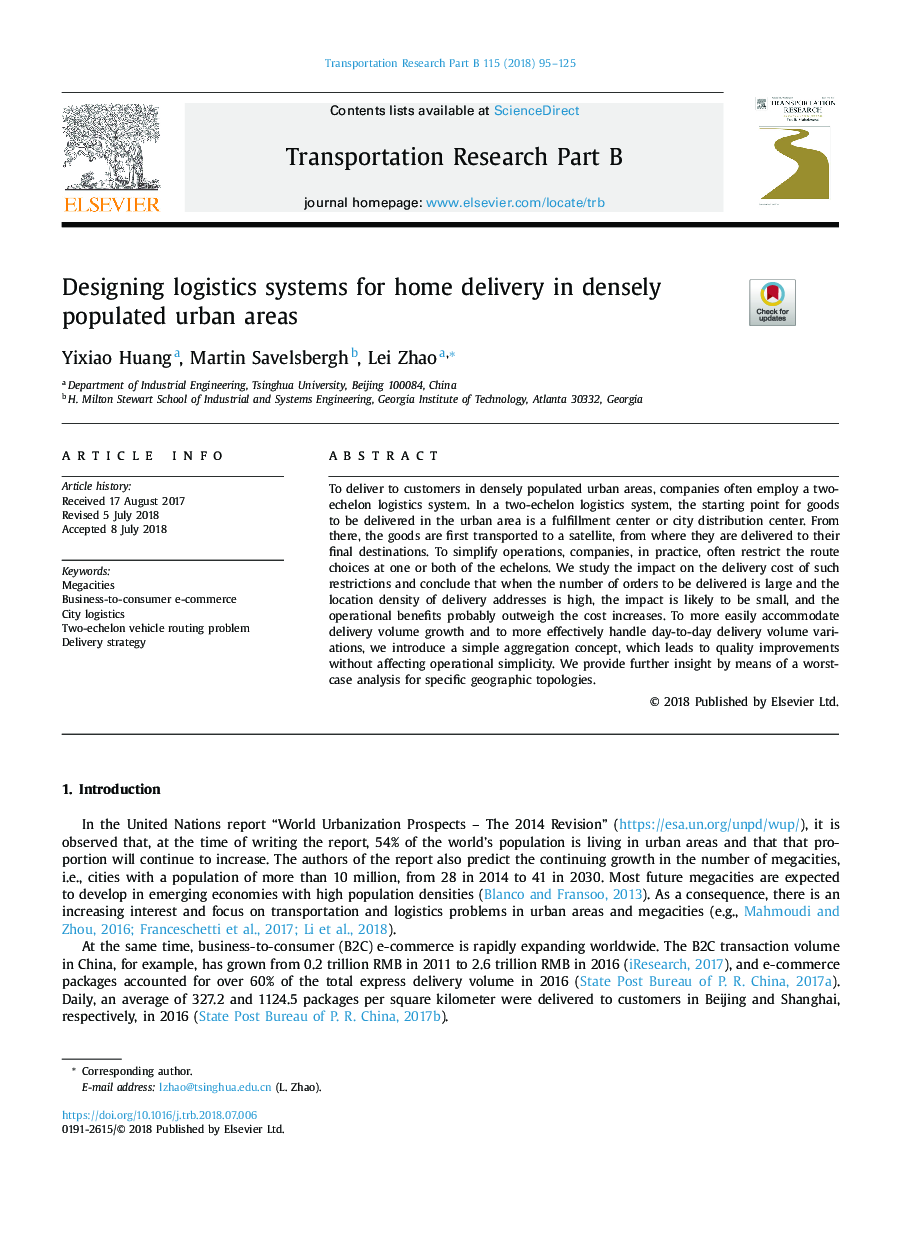| Article ID | Journal | Published Year | Pages | File Type |
|---|---|---|---|---|
| 7538881 | Transportation Research Part B: Methodological | 2018 | 31 Pages |
Abstract
To deliver to customers in densely populated urban areas, companies often employ a two-echelon logistics system. In a two-echelon logistics system, the starting point for goods to be delivered in the urban area is a fulfillment center or city distribution center. From there, the goods are first transported to a satellite, from where they are delivered to their final destinations. To simplify operations, companies, in practice, often restrict the route choices at one or both of the echelons. We study the impact on the delivery cost of such restrictions and conclude that when the number of orders to be delivered is large and the location density of delivery addresses is high, the impact is likely to be small, and the operational benefits probably outweigh the cost increases. To more easily accommodate delivery volume growth and to more effectively handle day-to-day delivery volume variations, we introduce a simple aggregation concept, which leads to quality improvements without affecting operational simplicity. We provide further insight by means of a worst-case analysis for specific geographic topologies.
Keywords
Related Topics
Social Sciences and Humanities
Decision Sciences
Management Science and Operations Research
Authors
Yixiao Huang, Martin Savelsbergh, Lei Zhao,
